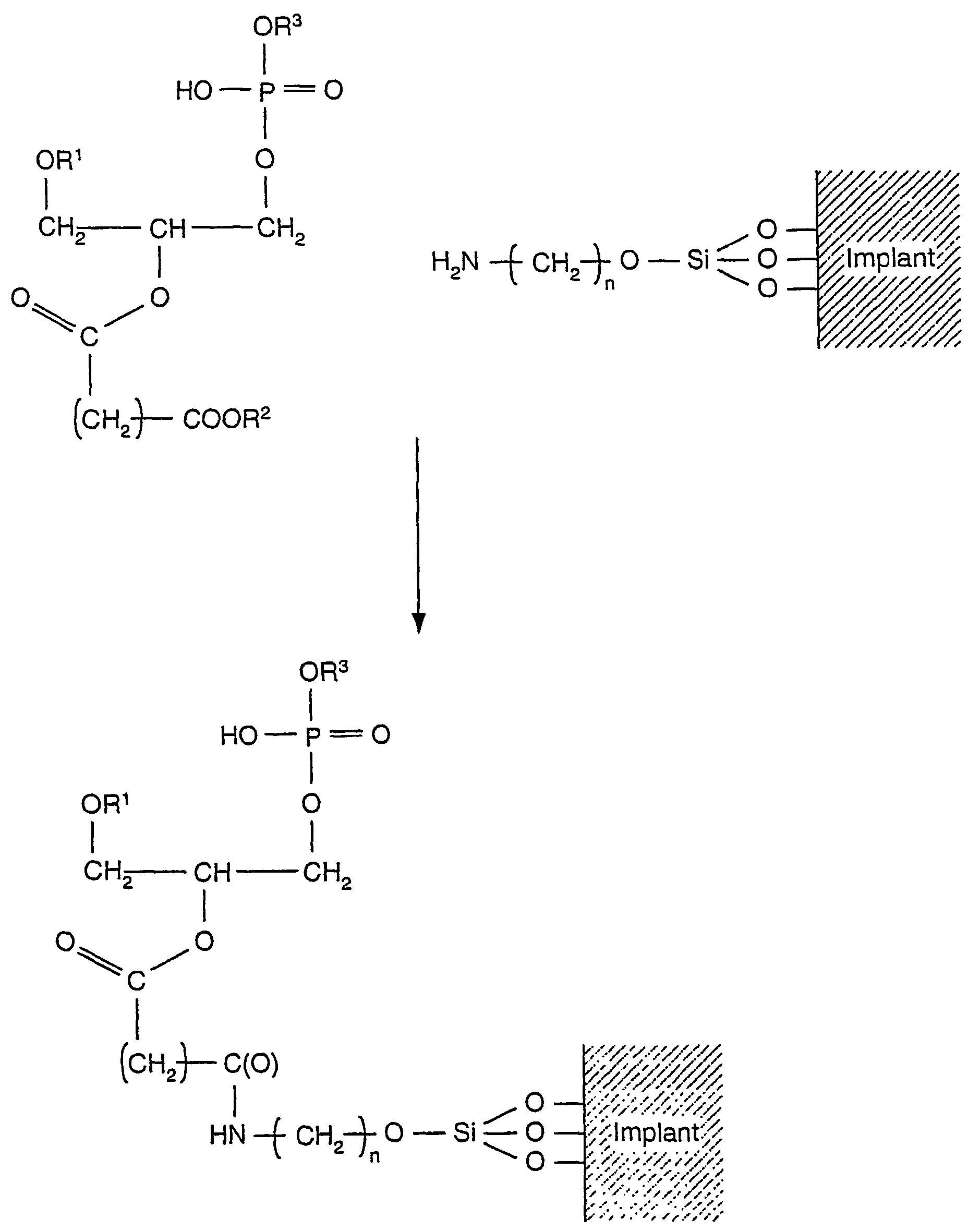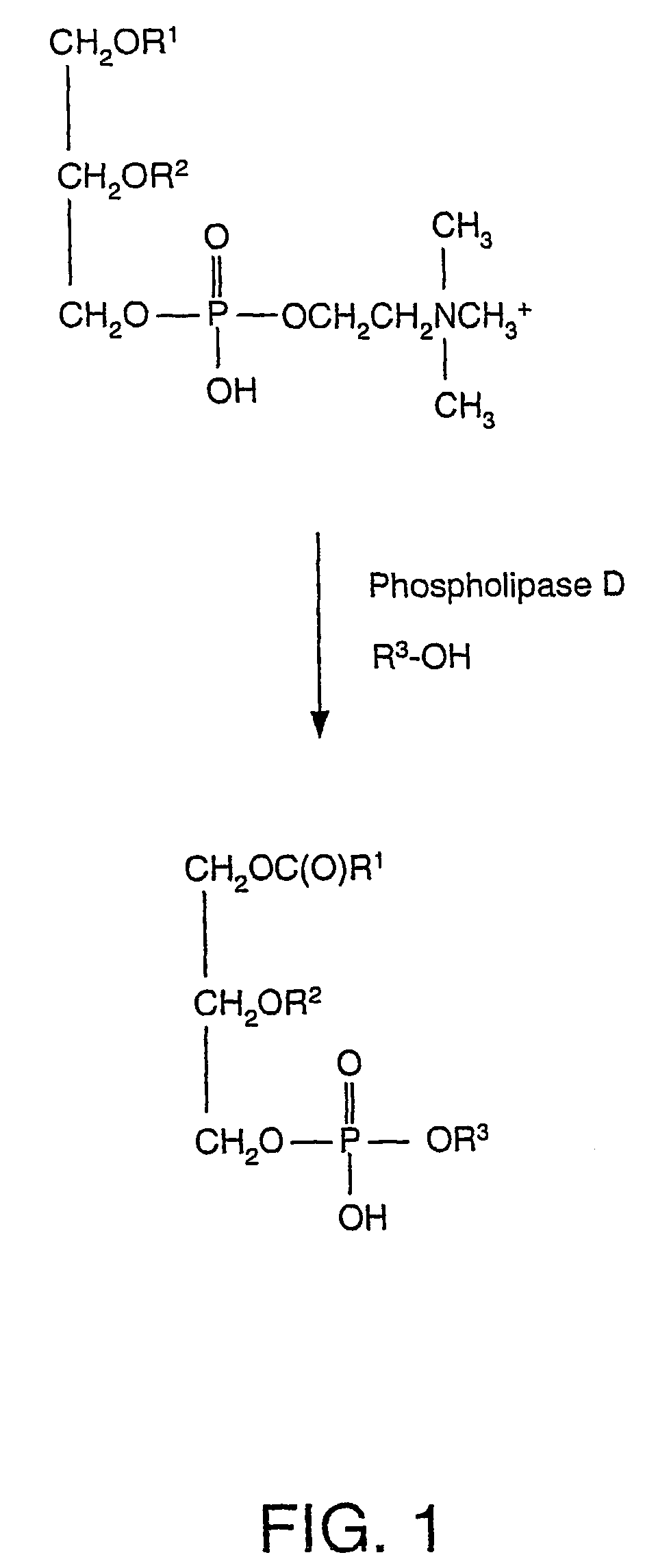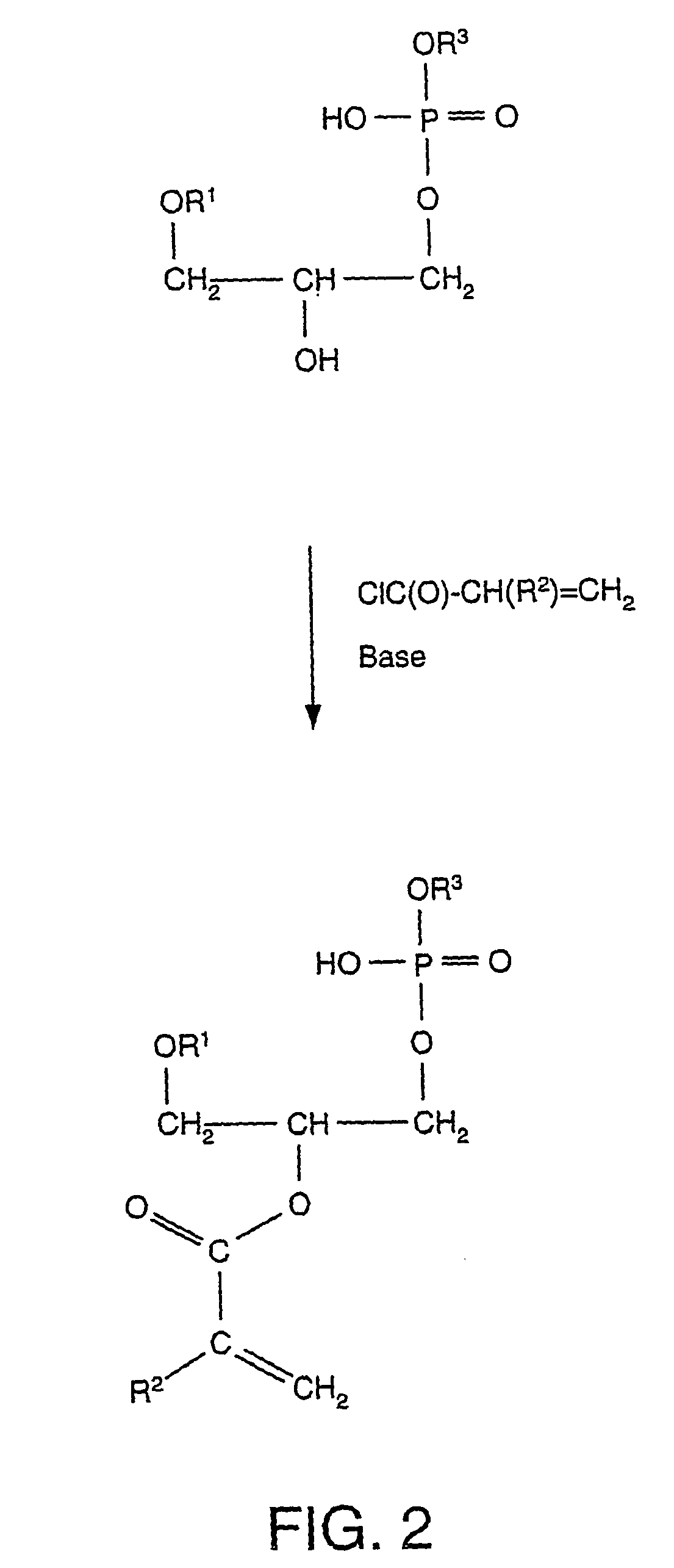Implant coatings
a technology of implant coating and coating layer, which is applied in the direction of prosthesis, packaging foodstuffs, and prosthetics, etc., can solve the problems of variation in coating thickness, variation in structural and chemical properties, and variation in bond strength at the coating, so as to enhance the integration of the implant into the surrounding bone, improve the biocompatibility of the implant, and enhance the growth rate of the implan
- Summary
- Abstract
- Description
- Claims
- Application Information
AI Technical Summary
Benefits of technology
Problems solved by technology
Method used
Image
Examples
Embodiment Construction
Calcium-Phospholipid-Phosphate Adsorbed Coatings
[0028] In an embodiment, an implant may be coated with a calcium-phospholipid-phosphate complex. The phospholipid portion of the coating has the general structure (1) depicted below: [0029] where R1 and R2 are each independently H, C1-C24 alkyl, C2-C24 alkenyl, or C(O)R4, where R4 is C1-C24 alkyl or C2-C24 alkenyl. [0030] R3 includes residues attached to the phosphate group. R3 includes glycerol [CH2—CH(OH)—CH2(OH)]; [0031] choline [—CH2—CH(CH3)3+]; ethanolamine [—CH2—CH2—NH3+]; monomethylethanolamine [—CH2—CH2—N(CH3)H2+]; [0032] dimethylethanolamine [—CH2—CH2—N(CH3)2H+]; [0033] serine [—CH2—CH(NH3)+—CO2−]; [0034] a carbohydrate [0035] or [0036] a diphosphatidylglycerol [—CH2—CH(OH)—CH2—O—PO3—CH2—CH(OC(O)R5)—CH2—OC(O)R6], where R5 and R6 are each independently C1-C24 alkyl or C2-C24 alkenyl. These residues are further depicted below.
[0037] The most common carbohydrate residue coupled to the phosphate group is the inositol group. ...
PUM
| Property | Measurement | Unit |
|---|---|---|
| Biocompatibility | aaaaa | aaaaa |
| Biodegradability | aaaaa | aaaaa |
Abstract
Description
Claims
Application Information
 Login to View More
Login to View More - R&D
- Intellectual Property
- Life Sciences
- Materials
- Tech Scout
- Unparalleled Data Quality
- Higher Quality Content
- 60% Fewer Hallucinations
Browse by: Latest US Patents, China's latest patents, Technical Efficacy Thesaurus, Application Domain, Technology Topic, Popular Technical Reports.
© 2025 PatSnap. All rights reserved.Legal|Privacy policy|Modern Slavery Act Transparency Statement|Sitemap|About US| Contact US: help@patsnap.com



